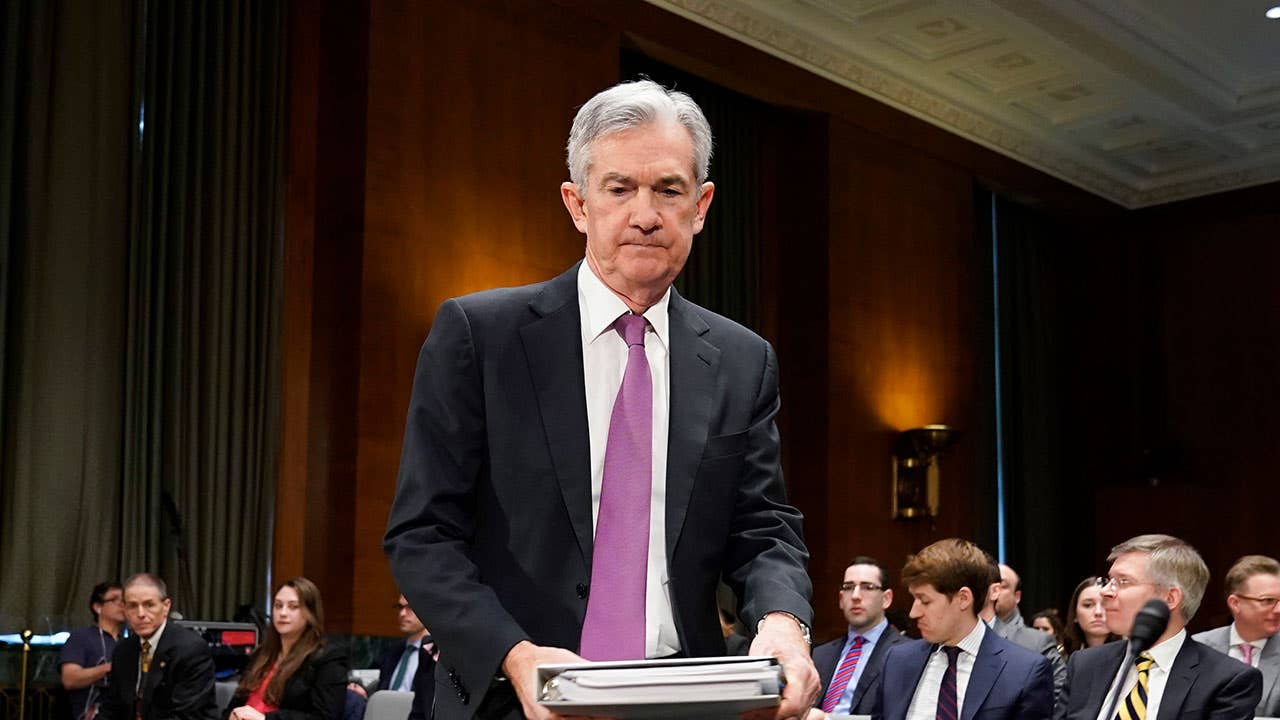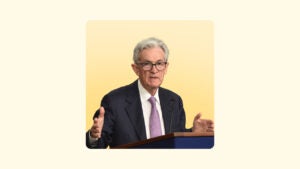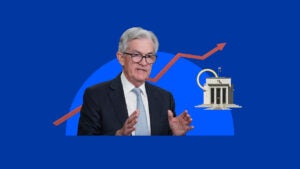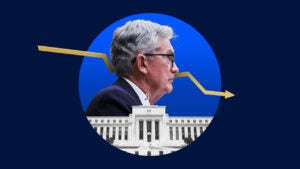3 things to watch for at the Fed’s April-May meeting

A Federal Reserve on hold might have seemed abnormal in January — but now, it’s just the new normal.
With the U.S. central bank only days away from making its next interest rate decision, officials on the Federal Open Market Committee (FOMC) look poised to continue holding borrowing costs steady for the third time this year.
Policymakers repeated in speeches leading up to next week’s gathering that interest rates were currently in the right place, echoing the same theme of “patience” that caught consumers by surprise in early January.
The Fed called off rate hikes sooner than expected to brace for choppiness, as they grapple with a variety of geopolitical uncertainties, slowing growth abroad and low inflation. Even as a recent string of positive data shows the U.S. economy may have some extra buoyancy, they’re not likely to forgo that approach anytime soon.
But just because it might not cost you more to borrow money come Wednesday, doesn’t mean there won’t be new developments with implications to your wallet.
Here are three key themes to keep an eye on ahead of the upcoming meeting – and what they mean for you.
1. What will get the Fed moving again on rates?
The U.S. economy can change a lot in four months.
When the Fed first started preaching patience in January, it had just recovered from a stock market sell-off. The S&P 500 Index booked its worst December since the Great Depression, while financial conditions tightened considerably.
Then, some complicated labor market data appeared. The U.S. economy in February added an upwardly revised 33,000 new positions, the weakest gains since September 2017. The number of Americans applying for unemployment insurance also picked up in the early months of 2019.
Those datasets served as a backdrop for the January and March FOMC meetings. But now, the economy seems to have perked back up. The S&P 500 on Tuesday closed at an all-time high. Job growth in March rebounded, while initial jobless claims are now near a 50-year low.
For these reasons, consumers should pay close attention to what Powell says about the economy, including if they address what it will take for the Fed to move again, says Sarah House, director and senior economist at Wells Fargo Securities.
“You’ve seen sentiment turn around over the past couple of months, not just over fears of a recession, but over thinking that the Fed could cut rates,” House says. “The question is, does all of this mean it’s strong enough to where they could potentially hike rates again?”
Fewer than 1 percent of investors are now betting the Fed could raise interest rates again at some point this year, according to CME Group’s FedWatch. Though it’s next to nothing, it shows a subtle shift from just a week earlier, when not a single investor thought the Fed would increase rates again.
This pick up is likely driven by the fresh positive data and revived sentiment about the economy, says Ryan Sweet, director of real-time economics at Moody’s Analytics.
“Fears about the economy slowing abruptly in the first quarter are proving to be premature,” Sweet says. “Powell is going to be really careful not to cause (markets to think) that the Fed’s turning hawkish. But in the end, Powell will let the data do the talking.”
Concern about the economic outlook
The Federal Reserve Bank of Atlanta is also forecasting an initial reading for gross domestic product (GDP) of around 2.8 percent – a strong rebound from just last month, when it predicted that growth would be below 1 percent.
But even if the GDP report — due Friday from the Department of Commerce — registers above expectations, it’s likely not going to steer the Fed away from its current course for policy, says Michael Pearce, senior U.S. economist at Capital Economics. The data is backward-looking, he says, and it might also display some mixed signals.
“The Fed is concerned about the economic outlook rather than what happened between January and March,” Pearce says. “Although the headline number is likely to be positive, the underlying details could also be pretty negative. The big difference is, domestic demand has weakened.”
The upbeat data also doesn’t erase the other looming uncertainties that the Fed has cited: Brexit, slowing growth abroad and U.S.-China trade policy, says Greg McBride, CFA, Bankrate’s chief financial analyst. Although a new round of trade talks are expected to resume and Brexit looks to be delayed even further, “that just kicks the can further down the road,” he says.
“The economy certainly warrants a more hawkish tone than the Fed has been humming lately, but the Fed might give these uncertainties more weight than warranted,” McBride says.
Pay attention to signals from ‘Fed speak’
Sending a specific signal about the outlook for rate hikes is going to be tricky for Fed officials, who might be scarred from the market reaction to their December tone. But you can find clues about the outlook for rate hikes if you look hard enough, House says.
Pay attention to the use of the word “crosscurrents,” as well as the way Powell characterizes the global slowdown and inflation, House says. If Powell also mentions the balance of risks, listen to whether he says they’re tilted toward the upside. That could mean the Fed has increasing confidence in the economy.
“The goal will be to keep the status quo,” House says. “The Fed is not going to send much of a signal one way or the other.”
2. The possibility of downgraded views of inflation from officials
But one aspect of Fed policy hasn’t been so tricky to figure out: Inflation. Prices as judged by the central bank’s preferred gauge haven’t breached 2 percent substantially since the Fed first defined this target in 2012, and the Fed is concerned about it.
“Powell has already singled out inflation as the key to the next rate hike, so they’d likely tread carefully about lowering the bar they’ve already set,” McBride says.
That means officials are likely going to bring up the conundrum this time around, Pearce says. In the post-meeting statement from its March gathering, the Fed said “overall inflation has declined.” There’s a chance officials could potentially downgrade that description even more come Wednesday, Pearce says.
“That’s a concern for the Fed, that even when economic growth is still pretty solid, they’re still not hitting their inflation target, and now they’re undershooting it a bit more,” Pearce says. “That could reinforce the signal that the outlook is pretty neutral, and then bolster the view to cut interest rates.”
Even though it’s not something they’re estimating, Fed officials have started to consider which conditions might warrant a cut – and it all has to do with inflation.
Chicago Fed President Charles Evans, who has a vote on this year’s FOMC, said April 22 in an interview with The Wall Street Journal, that if inflation runs below 2 percent for a longer period of time, the Fed would need “to make an adjustment downward in the fed funds rate.”
The Fed is also gearing up for a review of its strategies, tools and communication practices in early June, and the April-May gathering will be last time all officials are together before that summit.
It will be worth paying close attention to any discussion about a potential target range that comes up during the press conference, because that could allude to any official decision made at the review, Sweet says.
Vice Chair Richard Clarida said in an April 9 speech that he might be open to the idea of creating an average target range for inflation, rather than specifically defining an objective of 2 percent.
“This whole idea of average inflation targeting – the immediate implications are pretty dovish. That would really raise the bar for any future rate hikes,” Sweet says. “That means they’ll aim for higher inflation when the economy is good, to make up for when inflation is below target during bad times.”
3. Expect the Fed to more clearly define their patient stance
But looming above the inflation dilemma is a lesson Powell has learned the hard way throughout his tenure at the U.S. central bank: What you say isn’t always what the market hears.
That theme is going to prove especially true for the rest of his colleagues, as their patient stance extends beyond a third rate-setting meeting. As more officials preach patience, market participants start to hear the words “rate cut.”
Investors are now betting there’s about a 30 percent chance that a cut could occur this year, according to CME Group’s FedWatch. That’s a schism from what the Fed’s so-called “dot plot” communicates, which currently forecasts policy on hold for the rest of 2019. It’s worth paying attention to whether Powell will address this divide, Sweet says.
“It’s still a little bit premature for the Fed to cut rates,” he says. “Historically, rate cuts don’t come with slightly below-target inflation, where odds of a recession are starting to diminish. Given that the economy is showing signs of perking back up, we’re entering a period where communication is important.”
But just because a cut isn’t forecasted on the “dot plot,” doesn’t mean it’s not on officials’ minds. In the dot plot’s seven-year existence, only one official has ever forecasted a cut, says Pearce. And there’s a reason for that: Even if a cut was something officials were expecting, they wouldn’t want to misdirect markets and Fed watchers.
“They would be scared about fueling speculative successes,” Pearce says. “But, in some sense, we’re in unprecedented territory. At one point, the Fed will need to cut interest rates. The economic cycle will turn eventually.”
Neither the dot plot, nor Fed officials’ Summary of Economic Projections will be updated at this meeting.
[Read: Everything you need to know about the Fed’s dot plot — and why you may want to ignore it for now]
The bar appears to be higher for a rate hike, Sweet says, but that doesn’t mean a rate cut is imminent. Inflation could very well pick up again in the later months of 2019.
“Their hands are tied by signaling there’s no rate hike this year in the dot plot, and odds favor them just sitting on their hands,” Sweet says. “The economy would have to be booming for them to justify raising rates.”
It’s safe to say that the term “patient” is more than just a buzzword now – it’s part of Fed policy. But it still might be worth revisiting, if consumers think it has an expiration date as more upbeat data pours in, House says.
“When Powell first started using this word ‘patient,’ it was the first week of January, so it was coming after that big downturn in the market, and then also the tightening in financial conditions,” House says. “But as we get further distance between that rough patch, there are more questions about what patient means in this context.”
What this means for your money
A Fed on hold is helpful for borrowers, who may need some time to catch up after the Fed hiked rates four times in 2018. But for savers: You might not be as left out as you think, Bankrate’s McBride says.
There are a number of high-yield savings accounts with annual returns higher than inflation, McBride says. Shop around for the best rates.
[Read: Best high-yield savings accounts]
It’s also a good time to focus on building your emergency savings, McBride says, for which a high-yield savings account could be used. Even though the economy looks robust now, and a patient Fed will help spur more growth, downturns are inevitable.
“Now is the time to make hay while the sun shines,” McBride says. “Pay down debt and boost emergency savings while times are good, so you’re on better financial footing when times aren’t so good.”





